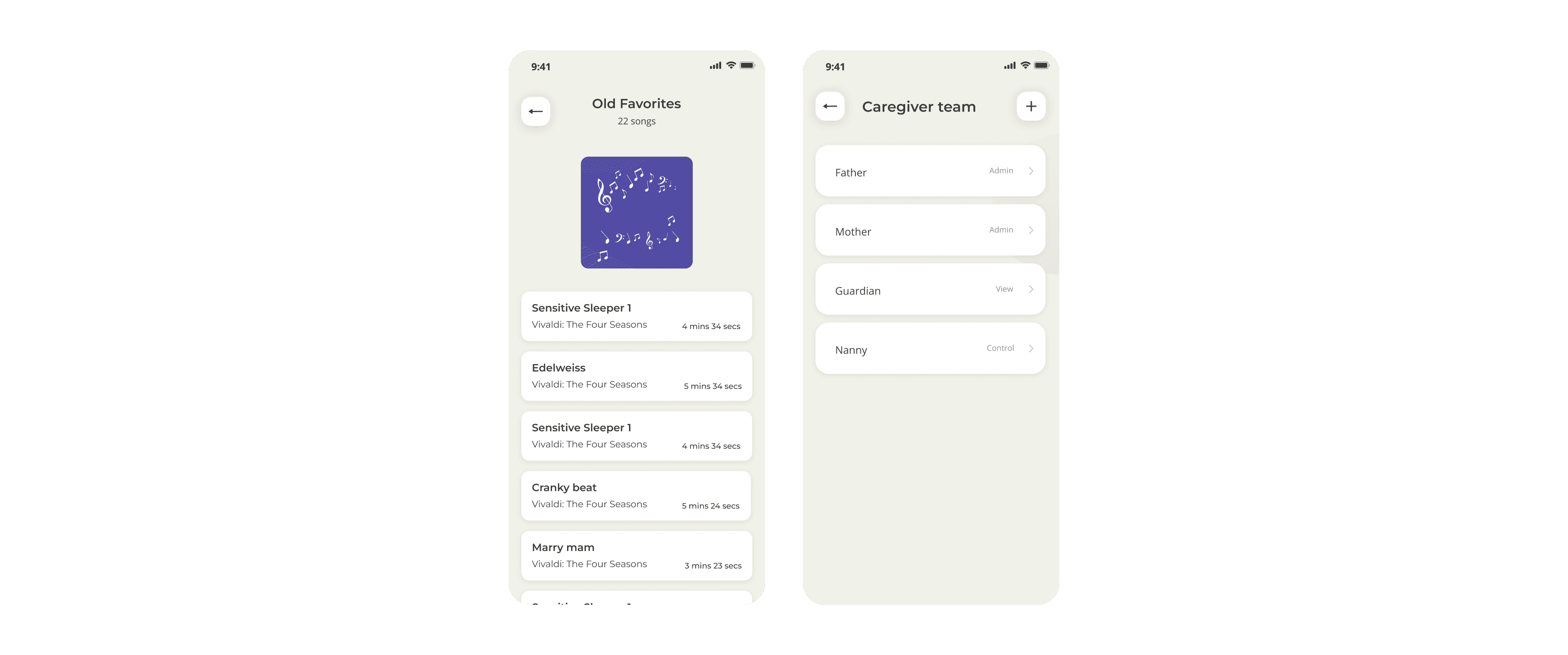
Saving tech bandwidth by implementing a design system
Saving tech bandwidth by implementing a design system
My journey of developing and consistently maintaining a design system that resulted in saving tech bandwidth. Also allowed designers to concentrate solely on problem-solving, as the UI design process has been greatly simplified.
My journey of developing and consistently maintaining a design system that resulted in saving tech bandwidth. Also allowed designers to concentrate solely on problem-solving, as the UI design process has been greatly simplified.
My role
Research &
Design
Collaborators
Tech team ❤️
Timeline
In process always
Outcome
Saved a lot of time
Context
Context
In the fast-paced world of startups, design can sometimes become an afterthought, leading to inconsistencies, inefficiencies, and a fragmented user experience. When I joined Cradlewise, a burgeoning tech startup revolutionizing baby tech, I was met with a product that brimmed with potential yet was marred by design disparities. This case study outlines the journey of creating Cradlewise's first design system, aimed at unifying our product's aesthetic, improving design efficiency, and laying a foundation for scalable growth.
In the fast-paced world of startups, design can sometimes become an afterthought, leading to inconsistencies, inefficiencies, and a fragmented user experience. When I joined Cradlewise, a burgeoning tech startup revolutionizing baby tech, I was met with a product that brimmed with potential yet was marred by design disparities. This case study outlines the journey of creating Cradlewise's first design system, aimed at unifying our product's aesthetic, improving design efficiency, and laying a foundation for scalable growth.
The Challenge
The Challenge
Cradlewise's app, while innovative, faced several design-related challenges that hindered its ability to deliver a seamless user experience:
Inconsistency Across Screens: Every screen had a unique look and feel, leading to a disjointed user experience
Cradlewise's app, while innovative, faced several design-related challenges that hindered its ability to deliver a seamless user experience:
Inconsistency Across Screens: Every screen had a unique look and feel, leading to a disjointed user experience

Typography Chaos: The usage of two different fonts lacked a clear rationale, muddying the visual hierarchy and communication effectiveness.
Typography Chaos: The usage of two different fonts lacked a clear rationale, muddying the visual hierarchy and communication effectiveness.

Hardcoded UI Elements: The prevalence of hardcoded UI elements meant that any change required substantial time and effort, significantly slowing down development.
Hardcoded UI Elements: The prevalence of hardcoded UI elements meant that any change required substantial time and effort, significantly slowing down development.
Dual Theme Design Burden: The necessity to design for both dark and light modes doubled the workload for our designers, creating inefficiencies in our design process.
Dual Theme Design Burden: The necessity to design for both dark and light modes doubled the workload for our designers, creating inefficiencies in our design process.

So that's why a design system was required.
So that's why a design system was required.
Thank you for reading!
Thank you for reading!
Feel free to connect let's chat about design, product, community, or anything
© 2025 Vaibhav Shukla. All right reserved.
Feel free to connect let's chat about design, product, mentorship, community, or anything
© 2024 Vaibhav Shukla. All right reserved.